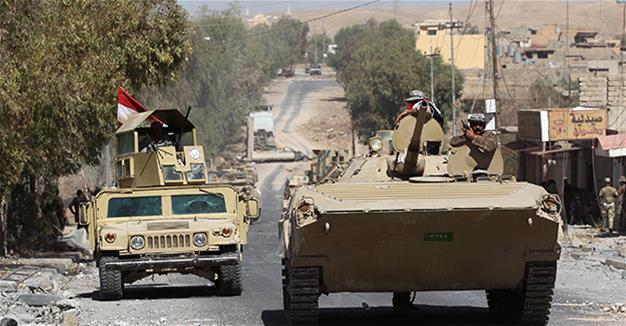Iraqi forces retake Tal Afar from ISIL
TAL AFAR

AFP photo
Iraqi forces have retaken almost all of Tal Afar, Islamic State of Iraq and the Levant’s (ISIL) stronghold in the country’s northwest, the Iraqi military said on Aug. 27.Just a week after authorities announced an offensive to push the jihadists from one of their last major urban strongholds in Iraq, the Joint Operations Command said Iraqi forces held all 29 districts of the city and were pursuing final clearing operations.
Pro-government fighters could already be seen celebrating, flashing victory signs as their tanks rolled through the streets, waving Iraqi flags and taking down black IS banners from buildings and lamp posts.
The offensive comes just weeks after Iraqi forces retook second city Mosul from ISIL, in their biggest victory since the jihadists seized control of large parts of Syria and Iraq in mid-2014.
Much of that territory has since been retaken with support from coalition air strikes and ISIL is also facing a major U.S.-backed offensive against its de facto Syrian capital Raqqa.
The loss of Tal Afar, in northern Iraq between Mosul and the Syrian border, will deprive ISIL of what was once a significant hub for movement between the Syrian and Iraqi components of the self-styled “caliphate” it declared three years ago.
Now, Baghdad is expected to launch a new offensive on Hawija, about 300 kilometers north of the Iraqi capital.
The coalition has announced carrying out strikes near Hawija in recent days, including two that killed ISIL fighters and destroyed a command post.
ISIL is also present in the vast western province of Anbar, where it controls several zones along the border with Syria, including the Al-Qaim area.
The offensive on Tal Afar, which lies on the supply route between Syria and the former Islamic State stronghold of Mosul, started on Aug. 20. Up to 2,000 militants were believed to be defending the city against around 50,000 attackers, according to Iraqi and western military sources.
Such a quick collapse of ISIL in the city, which has been a breeding ground for jihadist groups, would confirm Iraqi military reports that the militants lack command and control structures west of Mosul.
Residents who fled Tal Afar days before the start of the offensive told Reuters that the militants looked “exhausted” and “depleted.”
Tens of thousands of people are believed to have fled in the weeks before the battle started. Remaining civilians were threatened with death by the militants, according to aid organizations and residents who managed to leave.
Tal Afar has experienced cycles of sectarian violence between Sunnis and Shiites after the U.S.-led invasion of Iraq in 2003, and has produced some of ISIL’s most senior commanders.
















